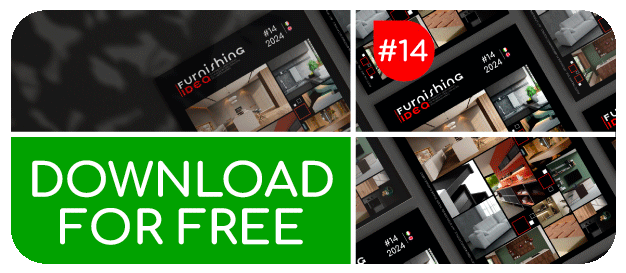
- 07/06/2020
- Industry news
In the times of Covid-19 it is more current than ever to know the characteristics of surfaces in relation to the possibility of contamination. This very topical issue will be addressed during a free webinar entitled “Antibacterial Surfaces: testing and evaluation of effectiveness“, organized on June 11 by Catas, the most important European laboratory for the world of wood-furniture.
Antibacterial surfaces: tests and efficacy evaluations
Antibacterial and Antimicrobial: they are among the functions declared today by companies for many types of components and surfaces, especially in the furniture sector, but not only. While in the past a great deal of attention was paid to the particularities of antibacterial surfaces, in the light of the Covid-19 emergency these could be a fundamental motivation for the choice. The antibacterial effect of surfaces is normally obtained through special additives or surface treatments that prevent the proliferation of microbes or bacteria. How to verify the action and effectiveness of these treatments? Catas' technicians and specialists, who have been studying and evaluating antibacterial coatings and sanitising treatments applied on various types of surfaces in the laboratory for years, will dedicate a webinar entirely to this subject.
They will discuss how to obtain antibacterial effects, sanitizing treatments on different types of surfaces (furniture, household appliances and everyday objects in the home or office), standardised test methods (activity and efficacy tests, ISO 22196 and comparison with other methods), analysis and interpretation of the results and the obligations laid down in the reference legislative instruments, such as the European Regulation on Biocides.
The appointment with Dr. Elena Conti, head of the Microbiology Section of Catas, is scheduled for Thursday, June 11 at 14.00 (seminar in Italian) and Tuesday, June 23, again at 14.00 (seminar in English).
You can register for free on the Catas website.
Furniture surfaces at the time of Covid-19
Dr. Franco Bulian, vice-director of Catas, offers an interesting in-depth study on how the surfaces of furniture behave in relation to the “possibility of contamination“, a text that we think it is appropriate to propose to you.
The term “contagion“, which in this period often recurs in our speeches, has a rather interesting etymology, deriving in fact from the Latin cum which means “together“ and “tangere“ or “to touch“. The simple gesture of touching a surface is actually a mechanism at the base of many contagions and some studies testify, for example, how door handles or lift buttons in crowded places can be counted among the primary causes of the transmission of many viruses.
These strange “biological entities“ are in fact able to travel easily, passing from the surfaces we touch to our hands and from our hands to our mouth and eyes, doors wide open to enter our body: a study carried out in Australia in 2015 showed that people tend to touch their faces very often (on average 23 times per hour) and these gestures, even unconscious, are usefully exploited by viruses to develop their spread.
The transmission of the virus through surfaces is evidently based on an initial infection from an infected person, perhaps through the famous “droplets“ (droplets of saliva transmitted through a sneeze, a cough or simply by talking to another person) to which is associated the ability of the virus to survive on the contaminated surface.
Recent studies, carried out precisely on Covid-19, indicate a fairly prolonged survival of this virus on plastics (up to 72 hours) and steel (48 hours), while it is more reduced on cardboard or copper.
Perhaps the most interesting data regarding interior furnishings is that relating to plastics, considering that many of the surfaces around us are painted or made in any case with laminates or other polymer-based materials that represent - precisely - the primary constituents of plastics.
Beyond all this, many things have changed in our daily lives in the light of the dramatic effects of the Covid-19 and we have learned that, in addition to the mutual distancing, the hygiene of our hands, as well as that of all the surfaces around us, is also crucial. These new needs and habits are determining an important reflection also for the world of furniture and finishes, which find themselves involved in specific requests for antibacterial effectiveness of surfaces or in any case their ability to withstand frequent cleaning and disinfection operations. In this regard, Catas, at the request of several companies, has recently increased specific studies in this direction.
The antibacterial effectiveness of surfaces
The antibacterial effect of the surfaces is normally obtained by the addition of special additives (e.g. silver-based) which have a bactericidal and/or inhibitory action towards their proliferation. Catas carries out specific tests to study the antibacterial action of plastics and other non-porous materials, contaminating the surfaces under investigation and subsequently verifying the effect they produce on bacteria. The reference methods are those described in ISO 22196 and JIS Z2801, as well as internal methods created to adapt the test to materials that due to their intrinsic properties are not suitable for analysis with the standardised methods. These tests obviously do not concern viruses and even less so Covid-19, which the institute certainly does not possess within its own reagentarium.
Resistance to cleaning products and disinfectant fluids
As already mentioned, frequent cleaning and disinfection of surfaces are recommended actions at all levels to counter the spread of “Covid-19“. Among the products declared effective against viruses are alcohol-based preparations and those containing oxidising agents, such as sodium hypochlorite or hydrogen peroxide.
Alcohol is certainly an agent to be taken into account, as it sometimes tends to cause the softening of certain coatings. On the other hand, oxidizing agents may be responsible for discoloration or “fading“, although there is currently little data to present a real case history. Finally, particular attention must be paid to the dyes that are sometimes added to these products: if these substances penetrate deeply into the surfaces they become difficult to remove, causing the onset of unwanted coloured stains.
In this regard, Catas has developed a specific investigation protocol (based on standard EN 12720) to verify the ability of the surfaces to resist contact with cleaning products and disinfectant liquids in common use.
Resistance to scrubbing
In addition to the test that evaluates the simple contact of a liquid with the surface under test, Catas has also developed a method to evaluate the combined effect of contact with the rubbing, basically simulating a real cleaning operation. The combined effect can in fact be very deleterious, causing indelible streaks or halos on the surfaces of furniture and furnishings in general.
The tools made available by Catas can certainly represent a valid help for the market while waiting for the regulatory world to start considering and working on these new needs.

 en
en  Italian
Italian French
French German
German Spanish
Spanish Portuguese
Portuguese








